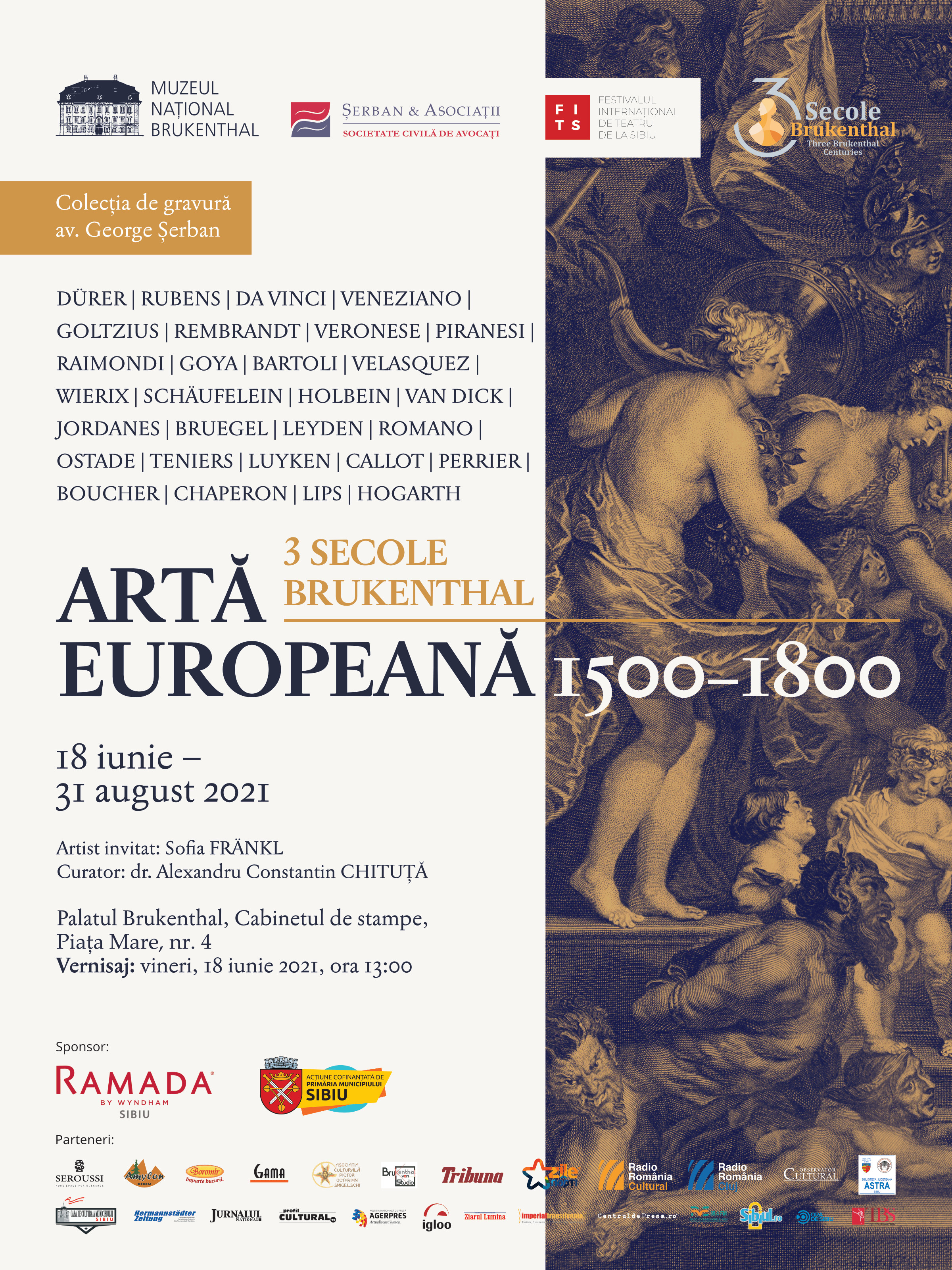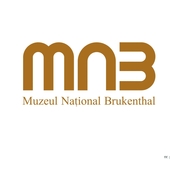
3 Brukenthal centuries, European Art 1500-1800
Exhibition
Location:
Organizer:
Dates and Hours:
About
Exhibition: 3 Brukenthal centuries, European Art 1500-1800Location: Prints and Drawings Cabinet, Brukenthal National Museum, 4, Large Square, SibiuOpening: Friday, June 18, 2021, 1:00 p.m.Curators: Alexandru Constantin Chituță PhDPeriod: 18.06-31.08. 2021Co-organizer: George Şerban LawyerPartners: Sibiu International Theater Festival, Ramada SibiuThe event is co-financed by the City Hall of Sibiu The anniversary of 3 centuries since the birth of Baron Brukenthal is a special occasion to emphasize, once again, the importance of culture in the development of society, the importance of collectors in the acquisition and promotion of material heritage.Along with Baron Brukenthal, for several years now, through a beautiful collaboration and friendship, lawyer George Șerban, an important contemporary collector, brought, annually, in addition to art donations, also a part of his collection, organising various exhibitions of Romanian art, Japanese prints or European art.Numerous meetings and dialogues have made us organize this year, for the first time in the country, a unique exhibition suggestively entitled 3 Brukenthal centuries, European Art, 1500 - 1800 which brings to the fore European artists and engravers who have worked during 3 centuries, between 1500-1800.
The most important European engravings exhibition organized in Romania brings to display, for the general public, but also for the specialists, engraving works after Michelangelo, Da Vinci, Rafael or signed by Rubens, Goltzius, Callot, Rembrandt, Goya, Velasquez, Teniers, Bruegel, if we were to mention just a few of them.
The exhibition also creates an extraordinary artistic and human dialogue. First of all, it is a happy meeting between two collectors: Samuel von Brukenthal and George Şerban. Secondly, this exhibition easily becomes a journey through the European space, but also a foray into European art, because George Şerban's works focus on engraving, and the works exhibited in the Brukenthal National Museum on paintings. In this way, we have in Sibiu an extraordinary foray of 3 centuries in the world of European art: you can see the engraving works of Tizian and Ecce Home, the painting in the museum, the same happens in the case of Bruegel, Teniers or Rubens. The rich collection of lawyer George Șerban manages to sketch a chronological and stylistic journey through the plastic creation of several countries: Italy, France, Spain, Germany, Holland, the Netherlands and England.
In addition to the historical and artistic value of the works on display, from George Șerban’s collection, the engraving, with the entire chain of its dissemination, also has the merit of preserving the memory of the era of so many great missing works. Ephemeral, like any sheet of paper, it has remained, sometimes untouched by the passage of time, sometimes the pale shadow of the original idea, eroded by overuse. But if engraving had not existed, the image of this period of exceptional flowering of the arts of the years 1500-1800 would have remained much poorer.
From the religious suites of Da Vinci and the Rephaelites we continue the Italian artistic world through the archaeological and architectural testimonies made by Piranesi. Germany opens our perspectives for medieval compositional formulas and for anecdotal interest and through the accentuated expressiveness of figures, as we find in the case of Dürer's graphics. The most important Hispanic artists Velasquez and Goya are present through their graphic works that bring an important stylistic value to the European environment. We find the passion for reality dressed in refinement by creating a monumental composition in the Netherlands, through the example of Rembrandt and Rubens, but also through the works of students and disciples, such as Anton van Dyck. The fairytale world of landscapes, and the inclination towards narrative, in good Dutch tradition we will meet in Jan Bruegel. Material, social and moral conditions will become an important form of expression for Dutch artists. The influences of cultural centers of the time, especially Rome and Venice are found in the representatives of French engraving who feel the need for a return to antiquity, but we also manage to address the issue of beautiful portraits and interest in snapshots, for unique compositional schemes, such as in the case of Callot. England brings to the fore the works signed by Hogarth.
We are glad that the Brukenthal National Museum can exhibit in this anniversary year, these works for the first time in the exhibition 3 Brukenthal centuries, European Art 1500-1800, George Şerban collection. The exhibited works are original series or edited by various engravers over time, some of them being exhibited for the first time in Romania.
An exceptional fact in the joint approach of Șerban & Chituță was that of the involvement of contemporary artists in the realization of various works exclusively for an exhibition. Thus, the artist Sofia Fränkl from Nürnberg, created in the workshop of the Dürer Museum in Germany a special work that embodies Baron Samuel von Brukenthal. This work, together with the copper plate, will be donated to the Brukenthal National Museum.
